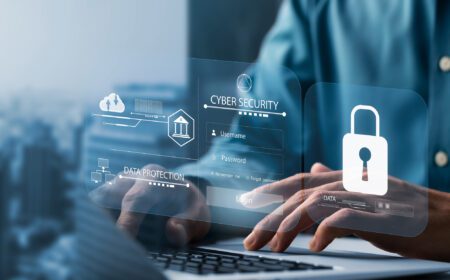These days, IT infrastructure and IT services are fully ingrained in our day to day lives. From the way we find entertainment, to the way we communicate, to the way we conduct business—internet connected technology is at the center of the modern world. Even in our tech-reliant culture, many enterprises fall short of the necessary cybersecurity framework required to safeguard and protect critical infrastructure, assets, and data.
What Is Critical Infrastructure
Critical infrastructure refers to the assets that are indispensable for the day to day operations of a culture and its economy, They are often essential for society to function properly. These assets commonly include:
- Electrical production and distribution
- Oil and gas production and distribution
- Water and sewage
- Telecommunications
- Internet services
- Food production and distribution
- Transportation
- Financial services
- Societal security, ie police, military
- Health industry
Critical infrastructure for cybersecurity is vitally important for society as a whole and companies whose business depends on them. This is especially true as many of these assets and their functions are becoming automated and internet reliant. This means even infrastructure for services categories like city water systems and transportation can be at risk of cyber attack.
Critical Infrastructure Threats
We’ve seen the havoc caused by cybersecurity threats—the WannaCry ransomware attack of 2017 disabled hundreds of thousands of computers and impacted telecommunications, banking, transportation, and education operations across the globe. That attack impacted critical infrastructure even though it did not appear to have been directed to. Imagine the damage it could have caused if that had been the intention of the attackers.
Increasing Threats
Cyber attacks against critical infrastructure systems have risen since 2010. In fact, cyber attacks against industries that manage critical infrastructure have increased by 20%. This increase is due in part to the outdated cybersecurity framework utilized by many of the organizations that monitor and manage critical infrastructure.
Vulnerable Targets
Due to its lack of critical infrastructure cybersecurity, essential assets are beginning to become desirable targets. For example, the American electrical grid was designed to respond to ebbs and flows in demand, provide reliable energy supply, and to remain competitive economically. It was not designed to defend against cyber attacks.
Internet-connected computers have provided more efficient management of critical assets, however, they have also left them vulnerable to attack. That’s due in large part to the outdated, legacy computers and software that control, supervise, manage, and secure many critical infrastructure systems.
If malware or other cyber attacks were to penetrate and disable a portion of the electrical grid or other critical assets, it could cause chaos and result in billions of dollars in economic damage.
Likewise, many other critical systems rely on outdated technology and cybersecurity protocols are could be vulnerable to attack.
The Internet of Things
As the Internet of Things (IoT) continues to grow and impact our day to day lives, the threats against it also grow. IoT devices are being used more and more to monitor, manage, and employ critical infrastructure assets. These devices may be vulnerable to attack and could allow hackers to infiltrate and compromise critical infrastructure cybersecurity systems.
Endpoint security is just as important as firewalls and other server security measures. IoT devices need to be secure and require a highly secure platform. This allows them to connect and perform required tasks when necessary. A secure platform also allows IoT devices to connect and perform required tasks when necessary, be regularly updated, and communicate with other devices their function may rely on.
Data exchanges between IoT devices and their platform requires a reliable cybersecurity framework. This framework necessarily includes any apps used by devices and the platform. Security systems for IoT devices and IoT platforms include availability, data sharing, apps, and more. In other words, each step requires attention to ensure a secure, reliable infrastructure asset can be maintained even in the face of cyber attack.
Staffing Challenges
Cloud computing, IoT devices, and the increasing threat of cyber attack can challenge the limitations of traditional critical infrastructure IT personnel. That’s because many of these systems are managed and maintained to improve efficiency, mitigate natural issues, and ensure smooth operation. In other words, the most common IT issues aren’t security, they’re regular operations.
A survey found that less than half of IT professionals and executives in the critical infrastructure field think they could immediately detect a cyber attack against their organization, even though 94 percent believed they could be a target.
That means that executives and IT staff of critical assets understand their vulnerabilities yet don’t have the means or methods to detect, disrupt, or stop a cyber attack against their operating systems.
Improving Critical Infrastructure Cybersecurity
The first step toward improving the cybersecurity of critical infrastructure is to identify the most important assets and operating systems and move to improve the security protocols around them. Continuous monitoring of these systems can help detect anomalous activities, breaches, and other suspicious actions.
Developing recovery plans, backup protocols, and other security measures can help ensure that in the event of an attack you can minimize downtime and mitigate loss. Updates, regular patching, segmenting networks, and even installing firewalls can help your organization defend critical assets from attack.
Just The Beginning
Of course, these security steps are just the beginning. Cybersecurity experts can help your organization develop realistic strategies that can defend your systems in real time. Analytic platforms can help monitor networks for anomalies, network architecture can be improved to mitigate weaknesses, and AI can be leveraged to learn patterns and detect irregular access and activity.
Our day to day lives are governed by automated systems and internet connected platforms. In the coming years, critical infrastructure cybersecurity will become more and more important. Especially as we’re beginning to see more state-sponsored cyber attacks.
A Secure Future
The cybersecurity framework that protects our essential infrastructure must adapt to meet the needs of today and tomorrow. Protecting these critical assets will require collaboration between public and private sectors if we are to safeguard and maintain the often unseen day to day infrastructure that enables our society to operate.
For a partner to help review the cybersecurity of your company, talk to the experts at NIC IT Services. Contact us today for your free consultation.

